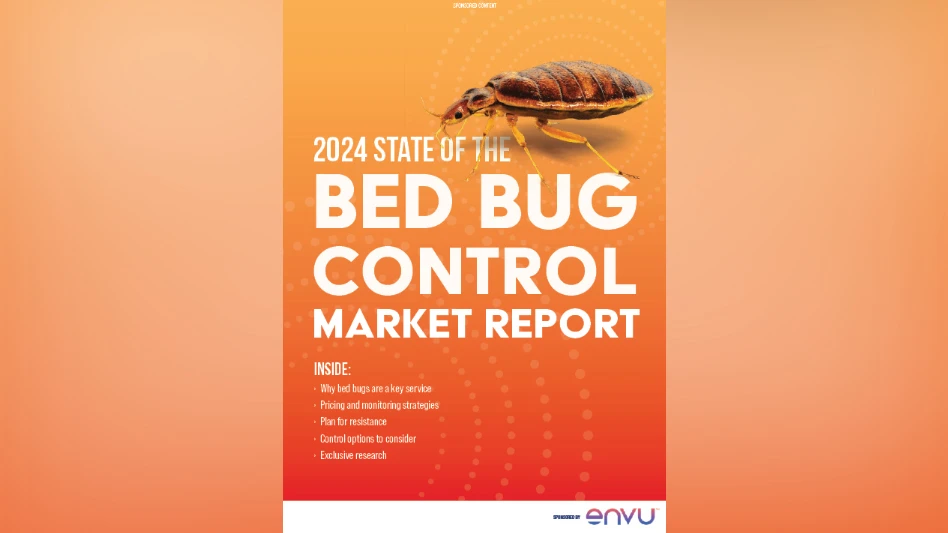
North America has three types of vultures: The California condor was barely saved from extinction. The turkey vulture is the most familiar and it is found all throughout the United States. Now, the black vulture is moving northward from South America and the southern U.S., and its population has exploded in numbers during the last 10 years. They are coming to a site near you!

I have worked with bird roosts that had more than 2 million starlings, 1 million grackles and sites with more than 100,000 pigeons, but these birds are a whole new dimension in the world of avian management. First, they fall under the protection of the Migratory Bird Treaty Act. If you are going to do anything other than structural modification or harassment, you will need a Form 37 from the U.S. Department of Agriculture for the state in which the problem exists noting that the depredation permit is necessary. The Form 37 must accompany the federal application to receive a depredation permit from the U.S. Fish & Wildlife Service.
WHY THEY ARE A PROBLEM. The urea from roosting vultures can shut down equipment, as well as eat the paint off walls and vehicles. It is so acidic, that over time it can even corrode metal in hand rails and rubber-coated wiring. Some buildings and parking garages are also having problems with vultures pulling the rubber seals from around windows and the windshield wipers off vehicles. I didn’t even discuss the smell. (Scratch and Sniff sticker not included in this article!) The wingspan of a vulture is around 6 feet. When roosting around electrical units, such as electrical sub-stations, this can cause electrical shutdowns and is one of the main reasons for cell phone tower failure. Maintenance costs are in the hundreds of millions of dollars in the U.S. alone. I have developed a system being used on cell phone towers and it repels quite nicely, so far. I have said that during the last 40 years everything will succeed and everything will fail depending on the circumstances.
KEY VULTURE CHARACTERISTICS. Textbooks state that the black vulture is not as sensitive to smell as its counterpart, the turkey vulture, which is almost always found in the same roost. It is noted that the turkey vulture has one of the largest olfactory bulbs (a part of the brain that helps control smell). That should make it more adept in locating carrion than the black vulture, which has a much smaller olfactory bulb. The theory is that the black vulture simply follows the turkey vulture to locate and aggressively take the turkey vultures’ find of carrion. I, on the other hand, am questioning this theory due to the research I have been doing during the last 10 years with both birds. I have buried carrion in the ground, leaving the carcass largely invisible and also placed carrion in plastic trash bags so that no portion could be seen. Half of the time, the black vultures will still show up before the turkey vultures. It reminds me of the early 1980s when I was studying computer programming. The computers at that time were the size of a small car. Now, your cell phone has more capabilities than the larger computers did back then. So, I question this theory that bigger is more efficient. But don’t tell this to turkey vultures. I don’t want to get involved in that discussion.

LOCATION IS KEY. What attracts huge numbers of vultures to buildings or manufacturing sites and cell phone towers? Location. Oil and gas refineries are becoming a favorite roosting place for vultures because they are built and designed to attract vultures. Refineries have high areas for roosts usually near fresh water or they have large fresh water pools for fire monitors. Also, oil and gas refined at the plant site release the same gasses that are released by a decomposing body: methane, hydrogen sulfide, ammonia and methanethiol. These are just a few of the many gasses that are by-products of the refining process. To oil executives, these aromas mean money. To the vulture, it smells like a giant smorgasbord. Many times, while climbing through a large vulture roost near an oil rig, I can’t help but notice the contented smiles of hundreds of these birds who are obviously thinking to themselves: ‘Does life get any better than this?’

Shooting is viable at some sites, such as food sites, dumps, etc., but not on oil and gas facilities. Shock track on certain sites where there are ledges can work if the entire ledge is covered and no space is left for them to stand comfortably. Spark-producing products, such as shock track, cannot be used at a refinery since they would blow up and level the refinery. That will strain the relationship you have with your customers.
High tensile wire has been tried, but the birds were observed using the wire as a hand-hold, if you may, by folding a wing over the wire to help stabilize themselves in high winds. And the higher you go, the windier it gets. Structural modification works well, but it must have a 90° slant or the vultures will use it as a couch. Methyl anthranilate has been tried, but these birds stick their heads in dead bodies and love it. So, they just tuck their heads under their wings and go to sleep.

AN IMPORTANT PERSPECTIVE. Vulture management is an adventure, but we have to be balanced in our efforts. Many people feel they are just a “bunch of buzzards” that create havoc and few would miss them. The fact is vultures are a genuine spoke in the ecosystem’s wheel. They have a place in our universe, and we are aware of what happened to the California Condor.
The author is president of A-Mark Pest & Bird Management, with offices in Baytown, Texas and Rockville, Ind. Contact him at pmarkham@gie.net.

Explore the April 2018 Issue
Check out more from this issue and find your next story to read.
Latest from Pest Control Technology
- Process of Elimination During Fly Inspections
- Cascade Pest Owner Treftz Encourages Continued Education with A.C.E. Credentials
- Cutting-Edge Identification Tips, Technical Research Discussed at UK Short Course
- NYPMA Hosts Educational Conference on Innovative Topics, Best Practices
- Pest-End Acquires Master Mosquito Control
- Certus Pest Acquires Aardvark Ant & Pest Control
- Early Registration Open for ICUP 2025
- Orkin UK Acquires Beaver Pest Control





